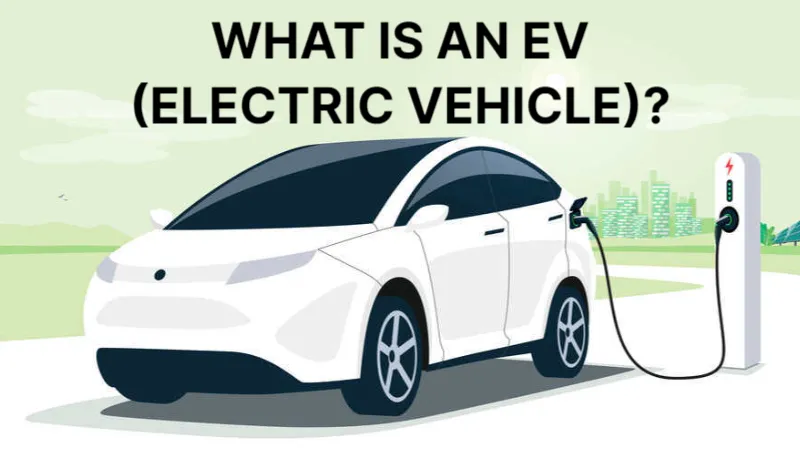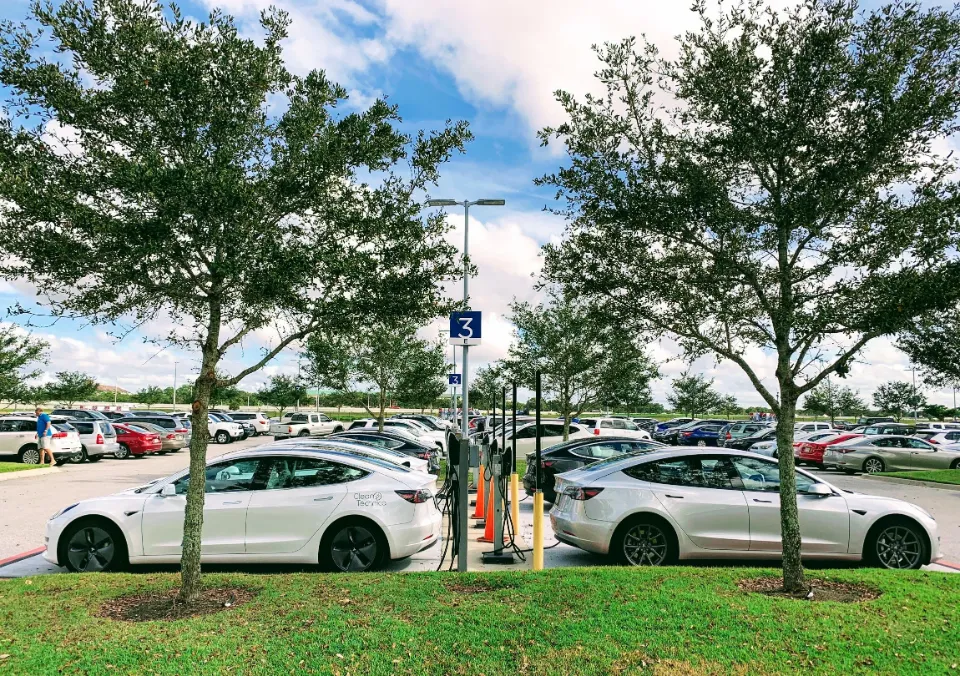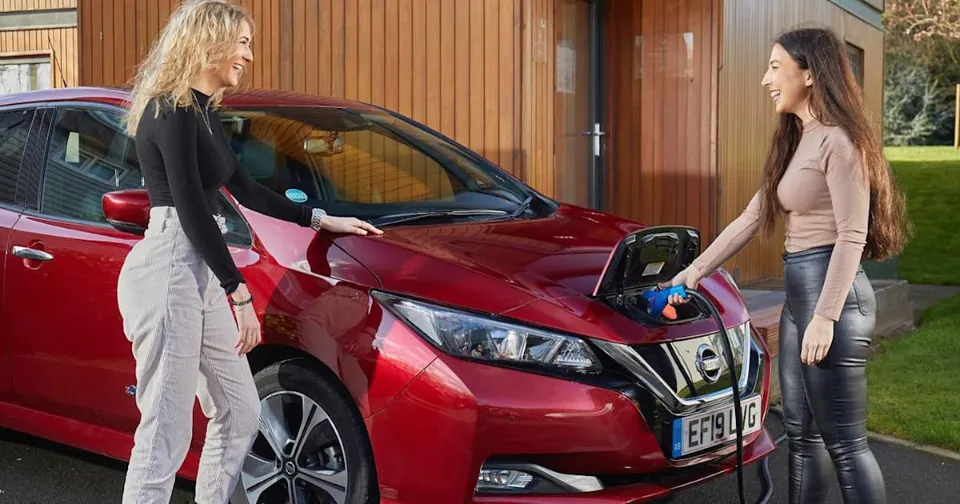A short while ago, an EV was simply an electric vehicle without an internal combustion engine. So, what is an EV? Below will give you a full explanation, including types, batteries, charging, and more to help you decide whether an electric vehicle is a future.
An electric vehicle is known by the abbreviation “EV.” The term “EV” refers to a vehicle that uses electric power either entirely or in part.
Please read on for more detailed information.
What is a Traditional EV?
For starters, the most accurate name is Battery Electric Vehicle, or BEVs, an acronym that is slowly catching on as “EV” becomes an increasingly generic term to denote “electrified vehicle.”
A body-on-frame sport utility vehicle (SUV) or, more recently, a full-size pickup truck are all examples of BEVs. Numerous electric delivery vans and battery-powered semis are on the horizon in the commercial sector.
Any BEV, regardless of its size or intended use, carries a sizable pack of rechargeable batteries, which are used to power one or more electric motors that turn the wheels. Internal combustion engines don’t exist.
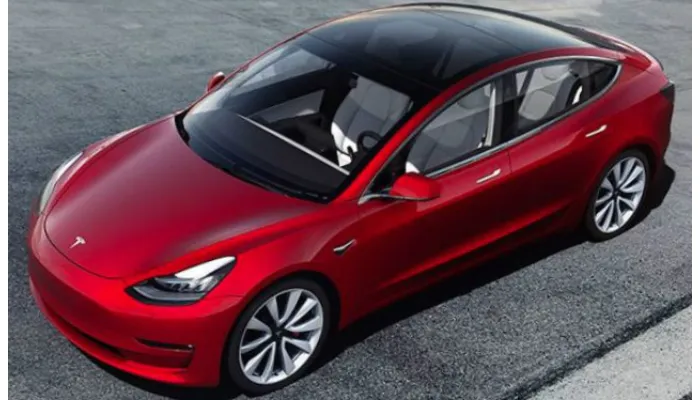
How Do Electric Vehicles Work?
Planning to buy electric vehilcles? But, how do electric vehicles work?
Plugging into a charge point and using the grid’s electricity allows electric cars to run. Rechargeable batteries that are used to power an electric motor that turns the wheels are used to store the electricity. Since electric cars accelerate more quickly than cars with conventional fuel engines, they feel lighter to drive.
Electric Vehicle Types
Three different kinds of electric cars exist, each of which was created to satisfy a different kind of driving requirement. They are fuel cell, plug-in hybrid, and all-electric vehicles.
All-Electric Vehicles
Instead of using gasoline, all-electric vehicles (also known as EVs or BEVs) have a sizable battery that powers one or more electric motors. Currently, the range of an all-electric car ranges from 80 to more than 300 miles, with new models introducing longer ranges. In comparison to gas-powered vehicles, all-electric vehicles require less maintenance (such as oil changes, smog checks, spark plug changes, and replacing a catalytic converter or other wear-and-break parts). This is true even if you just drive past the gas station.
All-electric vehicles can be charged at home with regular 120-volt or 240-volt house plugs as well as away from the house at public or business charging stations. The ability to use DC fast chargers, which can extend a vehicle’s range by more than 100 miles in just 30 minutes, is one advantage that all-electric vehicles have over plug-in hybrids.
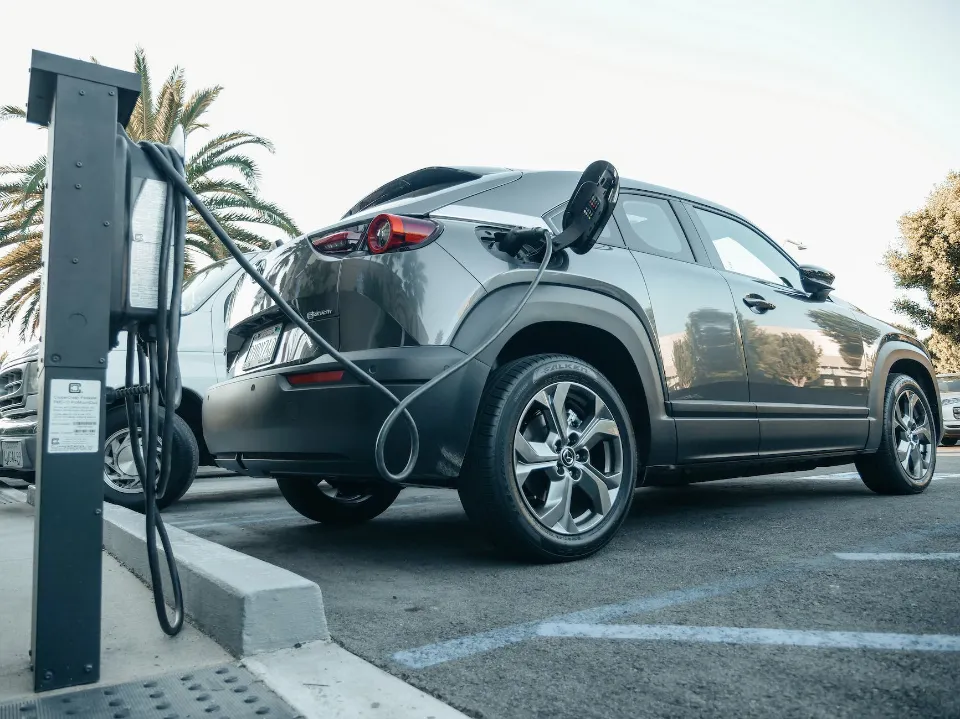
Plug-In Hybrid Electric Vehicles
Even at relatively high speeds, plug-in hybrid electric vehicles, also known as PHEVs, allow for both gas-only and electric-only operation. Plug-in hybrids are able to travel 20 to 55 miles on electricity alone while emitting no emissions because their batteries are smaller than those of battery electric vehicles. After exhausting its electric range, the vehicle switches to gas and continues to operate as a typical vehicle.
Most plug-in hybrid electric driving can be done in electric-only mode in California because most commutes are under 30 miles.
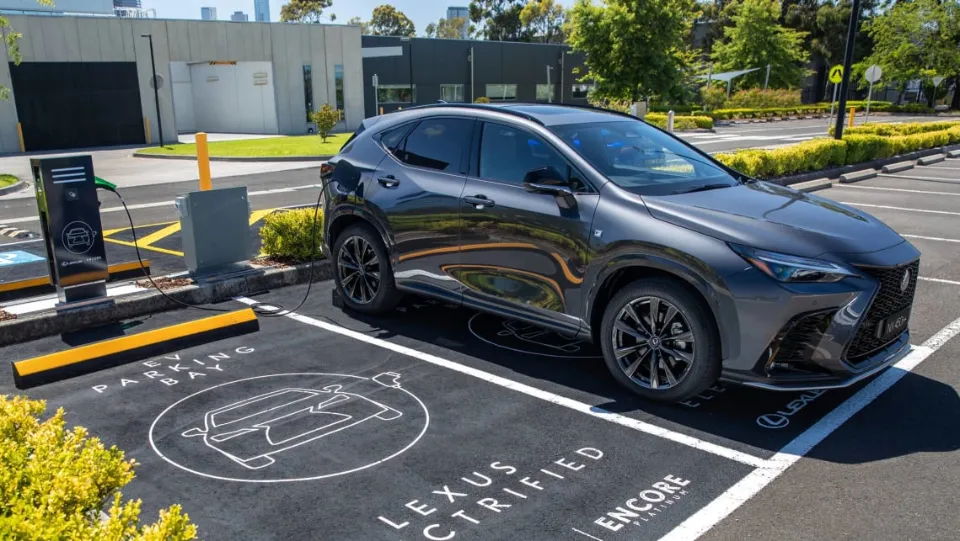
Fuel Cell Electric Vehicles
Fuel cell electric vehicles, also known as FCEVs, use electricity to power their engines but operate in a different way than all-electric or plug-in hybrid vehicles. Its power system is made up of a number of cells stacked together that chemically combine hydrogen gas from the car’s tank and oxygen from the air to produce electricity.
Fuel cells have a driving range of 300–400 miles on a single tank and can be refueled at hydrogen fueling stations, which are increasingly prevalent in California.
Additionally, they have all the advantages of an electric car, such as a quiet ride, incentives, and the ability to get a carpool lane decal to make it easier to use the carpool lane. Automakers offer three years’ worth of free hydrogen fuel as an added bonus for fuel cell drivers.
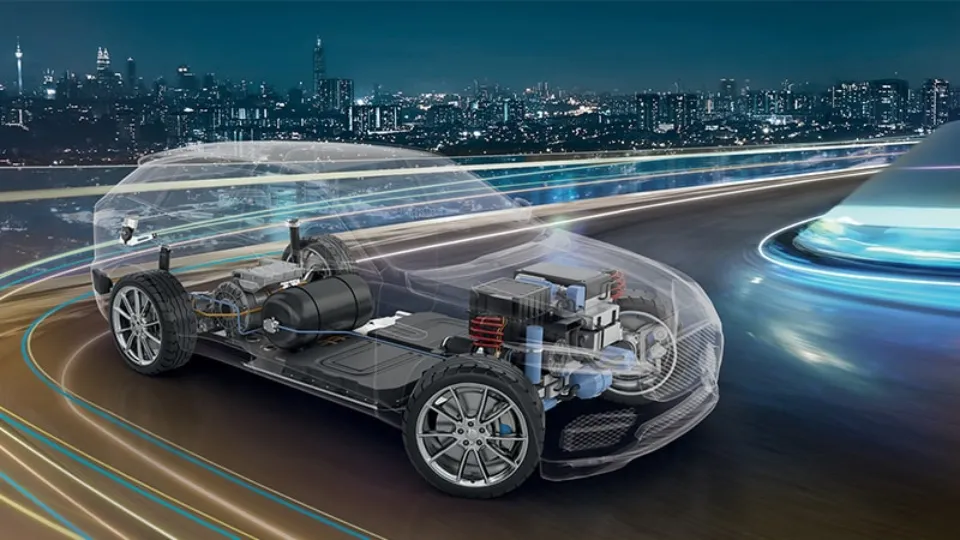
Key BEV Differences
The majority of EVs work by sending power through a particular kind of transmission to the driven wheels. They are capable of having multiple motors, just like the top-tier Tesla Model S and Model X BEVs and any other BEV with all-wheel drive. These have two, or even three, motors, one of which drives the front wheels and the others the back wheels. Try it with a car powered by an ICE (internal combustion engine)!
BEVs with a single motor can have either front- or rear-wheel drive, depending on where the manufacturer places the motor.
BEVs lack a conventional transmission, with a few notable exceptions. Unlike a gas or diesel engine, which develops torque as it accelerates, an electric motor delivers all of its torque at startup, and the power output doesn’t need to be controlled through a series of gear ratios to operate at its most efficient level.
Nearly all BEVs use single-speed gear reduction systems instead of geared transmissions, which are less expensive and complex than multi-speed transmissions. In order to give the BEV both low-end acceleration and highway speed capability, it reduces the electric motor’s extremely high RPMs—about 15,000 RPMs, or nearly three times as fast as a passenger car’s internal combustion engine—to a more efficient level.
Engineers must choose between reducing high-speed travel power or reducing acceleration power from a dead stop because the gear-reduction system must perform all functions in one. The majority of BEVs are geared toward excitingly quick initial acceleration, with a gradual loss of power as speed increases.
The need for that compromise might be eliminated by a multi-speed transmission, and Porsche created one for its Taycan BEV: a two-speed transmission that allows for both quick takeoffs and excellent top-end speed. The Taycan can accelerate quickly to about 160 mph, while the majority of today’s BEVs become somewhat sluggish after 80 mph and rarely go faster than 120 mph.
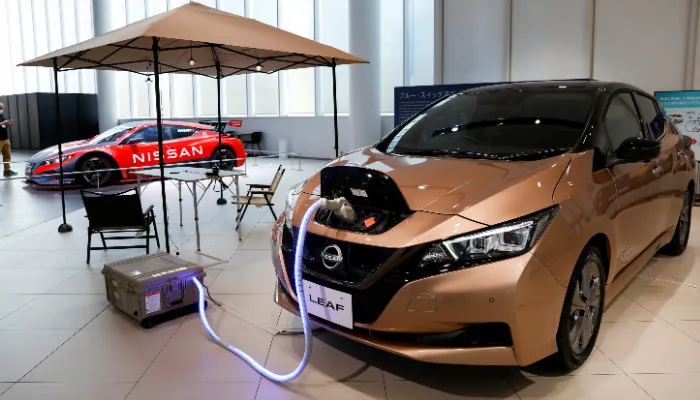
Electric Vehicle Battery
Below will give you a specific explanation of electric vehicle batteries.
Electric car batteries are made of lithium-ion cells, and are even larger and heavier than the batteries in gas-powered vehicles; after all, they have to generate enough energy to move an entire car.
Electric cars have two batteries each with its own specific function.
There is no simple answer. The typical lifespan of a car battery is between three and five years. But based on decades of industry experience, we know that time, heat, and vibration are the three main elements that affect a car battery’s lifespan.
Therefore, you probably want to know “how long does a Tesla battery last” before you consider purchasing one.
That will depend on a few different things. An average Tesla owner can anticipate at least 267 miles of range from a single battery charge. Elon Musk, the CEO of Tesla, claims that the batteries in your car should last for 1,500 battery cycles, or 300,000 to 500,000 miles. According to the average person, that corresponds to 22 to 37 years.
Depending on the brand, capacity, and technology used, EV batteries can cost anywhere between $2500 and $50000. According to the warranty on the car, replacing the battery will cost between $0 and $20000. Between 30% and 57% of the total value of the vehicle is the average cost of an electric car battery.
EV batteries will gradually lose capacity over time; the average annual range loss for current EVs is about 2%. The driving range may significantly decrease over time. EV batteries can be maintained, and if any of the battery’s cells become faulty, they can be changed. However, there is a chance that the entire battery pack may need to be replaced if it has too much degradation after many years of use and several hundred thousand miles.

Electric Vehicle Charging
Below will show you electric vehicle charging
We’re here to walk you through every step of how to charge an electric car, including where to charge, how long it takes, and how far a charge lasts.
An electric vehicle must be plugged into a charging station in order to be charged. There are four main places you can find these; at home, at work, at public locations and at service stations.
- Sometimes you’ll need to bring your own dedicated charging cable.
- When they park, the majority of EV drivers plug in to a chargepoint to stay charged.
- Drivers occasionally need to recharge while on the road, using stronger chargers.
- Depending on where you are, you can begin charging by simply plugging in, or you can use an app, contactless card, or RFID card.
To start with, how to charge electric car at home? Unlike most owners of conventional gas cars, EV owners can “refill” at home—just pull into your garage and plug it in.
Owners have the option of installing a wall charger for a much quicker charge or using a standard outlet, which takes a while. A Level 1 home connector kit, which works with 110 volts, is standard equipment for all electric vehicles. The device is essentially a fancy extension cord that enables you to plug your car into a regular outlet on one end and into the vehicle on the other.
How Much Does An EV Charging Station Cost? The charging cost of your EV depends on the type of charging station you’re using (level 2 or 3) and the time of the day you’re charging your car. You will be charged more as a result of increased traffic at the charging stations. Depending on the kind of car you drive and how quickly the charger charges, you may use different charging levels for your EV. Level 3 chargers are more expensive because of this.
Who Pays for Electric Car Charging Stations? In most cases, the property owner pays for the electric car charging station. They can reduce some of the costs by looking into utility rebates, tax credits, and incentives, among other innovative options.
Although it’s an expensive project, there are thankfully some options. There are federal incentive programs to help cover infrastructure costs or the cost of the charging station itself. Utility rebates covering up to 100% of the costs are sometimes available.
How Long Does It Take to Charge An Electric Car? An electric vehicle can be charged in as little as 30 minutes or as long as 12 hours. Ignoring the smaller variables, the power source, charger capacity, and battery size are the main determinants of a vehicle’s charging time.
- How Long Does a Tesla Battery Last Without Charging? According to these findings, if you have charged your Tesla at least 70 to 80%, you should be able to leave it parked for a few months without using any electricity. When Tesla owners go on extended vacations and are away from their vehicles, this gives them peace of mind.
- How Long Does It Take to Charge a Tesla? It can take anywhere from an hour to 12 hours to charge your Tesla. The amount of battery power in your car and the kind of charging station you use will affect how long it takes your Tesla to charge. In the tables that follow, we’ll make the worst-case assumption that you have a battery that is entirely discharged and that your vehicle has the largest battery.
How Much Does It Cost to Charge An Electric Car? To calculate the cost, EV owners should grab their most recent electricity bill and look for the cost per kilowatt hour, or kWh. This cost can range from $0.09 to $0.35, but the national average is shy of $0.14.
- How Much Does It Cost to Charge a Tesla? Due to absurdly high costs of electricity in 2022 and 2023, the cost to fully charge a Tesla Model 3 Long Range at home increased from $11.25 ($0.15/kWh prices) to over $20 (due to electricity prices spiking over $0.30/kWh), for example. Fully supercharging Model 3 Long Range can cost $37.50 in the US (about $0.50/kWh prices) and $45.00 in Europe has electricity prices of around $0.60.
How Far Can An Electric Car Go on One Charge?
Full-electric BEVs today have an average range of 250 miles on a single charge. However, newer models from marquee companies like One charge will take Tesla and Mercedes up to 600 miles.
See also: Best Car Battery Charger
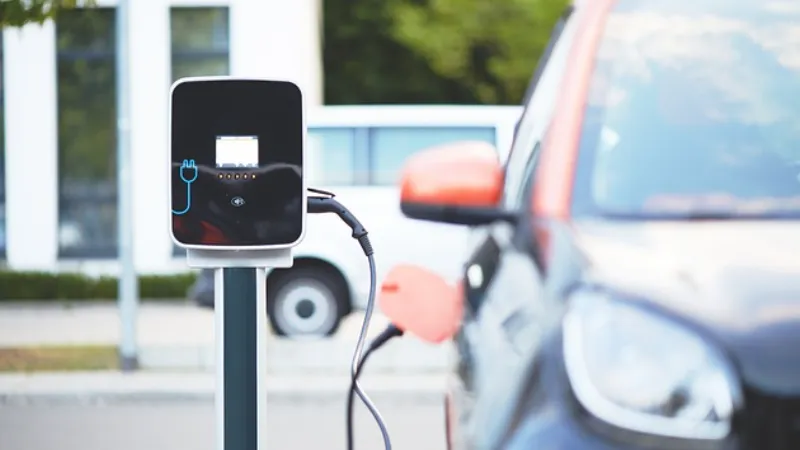
Are Electric Vehicles Cleaner?
Do electric cars use oil? EVs do not require oil which is necessary to lubricate the number of moving parts in a combustion engine. Electric motors, not oil-required engines, power EVs.
Electricity is considered a “clean” energy source, and most policymakers see battery-electric vehicles as an effective tool in curbing greenhouse gas emissions in the transportation sector.
Numerous studies have shown that using electricity to power a vehicle has a lower overall environmental impact than using gasoline or diesel fuel, even when coal is used to power the generating plant. This is referred to as the Well-to-Wheels basis. (At the risk of oversimplifying, the Well-to-Wheels (WtW) is an evaluation of the environmental impact of a specific good or service, taking into account fuel or energy used, tailpipe emissions, and other significant metrics over the course of its lifespan.)
Those regions—primarily North America, China, and Western Europe—are accountable for 95% of the world’s carbon emissions, according to a recent joint study by three universities, including Cambridge, Exeter, and Nijmegen in the Netherlands.
Electric Vehicle Cost Benefits
In addition to having zero tailpipe emissions and a cleaner environmental impact overall, BEVs can save their owners money over the course of their ownership compared to gas or diesel vehicles. They can travel tens of thousands of miles between brake jobs thanks to regenerative braking, which allows them to use their electric motors to slow down before the friction brakes need to be applied. This is because they have significantly fewer moving parts to wear out, don’t require oil changes or regular tune-ups, and have fewer moving parts overall.
BEVs are currently more expensive than internal combustion vehicles, on the other hand. That’s mainly because of how expensive their batteries are. However, battery costs are falling quickly, and most industry analysts concur that the day when BEVs will become as affordable as gasoline-powered vehicles is not that far off.
Hybrid Vs Electric Car
Which one is better for you when talking about Hybrid Vs Electric Car?
Hybrid Vs Electric Car: Electric vehicles are powered solely by electricity, which can come from a power grid, a solar array, or kinetic energy from braking. Standard hybrids rely on kinetic energy and gasoline, whereas plug-in hybrids rely on both of those sources.

FAQs
What is the Disadvantage of Electrical Vehicle?
These disadvantages include finding charging stations, charging times, higher initial costs, limited driving range, and battery packs can be expensive to replace.
Are Electric Vehicles Safe?
Electric vehicles are intrinsically safer than vehicles powered by internal combustion engines. Because they contain power cells that can short circuit if damaged, lithium-ion batteries, the energy source for all-electric vehicles, are flammable.
What Happens When An Electric Car Runs Out of Charge?
In short, when your EV runs out of charge it will stop running. But a number of warning systems in your car should alert you to top off long before your fuel runs out. Models differ, but generally, you can expect the following sequence of warnings: An initial low-charge warning (generally at 10-12 %)
Do Electric Cars Need Servicing?
An electric car needs to be serviced as often as any car. Tyre deterioration & tyre pressure check will be part of the service. replacement of windshield wipers.
Do Electric Cars Lose Charge When Parked?
Yes, but a very minimal amount. The reason for this is that even when the car is not running, the battery is still supplying power to some electric systems. These systems, which demand constant power, only use a small quantity of battery.
Summary: What is An EV (Electric Vehicle)?
Because they have fewer moving parts to maintain and use less or no fossil fuels (petrol or diesel), electric vehicles are very economical to operate. While some EVs utilized lead acid or nickel metal hydride batteries, lithium ion batteries are now thought to be the industry standard for contemporary battery electric vehicles due to their increased longevity and superior energy retention, with a self discharge rate of just 5% per month. Although efforts have been made to increase the safety of these batteries, there are still issues with them because they can experience thermal runaway, which has led to, for example, fires or explosions in the Tesla model S.
Fully charging an electric car at home can cost as little as $7.80, and doing so in public parking lots is sometimes even free.
If you have any questions, please leave a comment. Don’t forget to share the post. KV Auto tries to give you the best car industry information. Thank you for reading.

